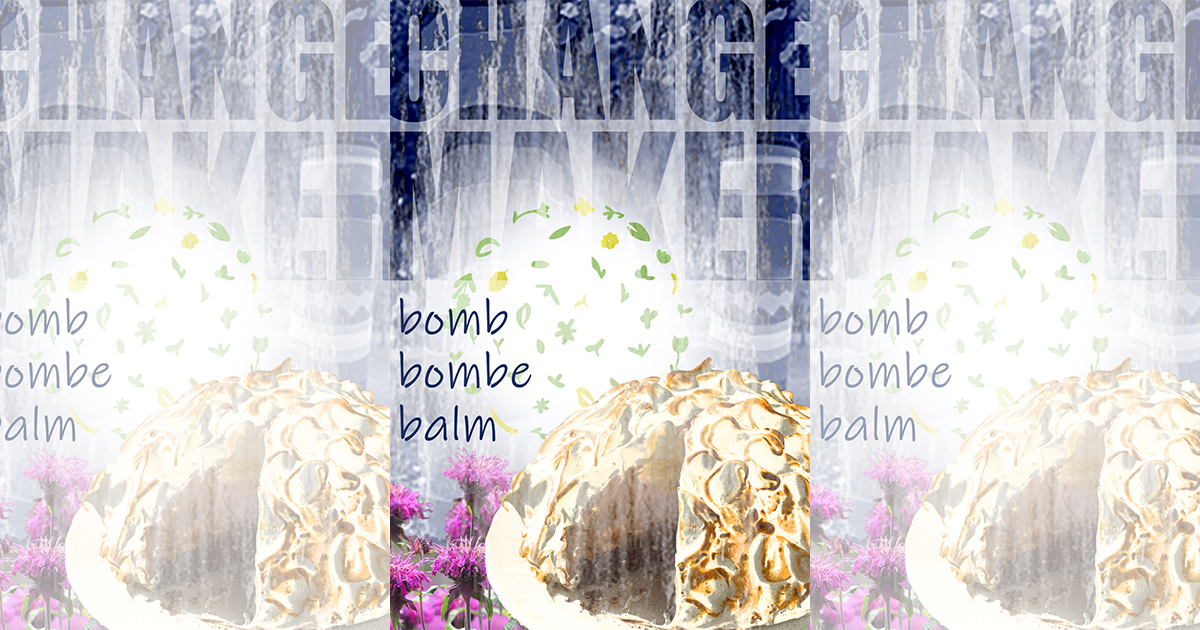Balm, (Seed) Bomb or Bombe

What kind of changemaker are you?
I watch a lot of the Great British Bake Off, and the most recent episode I watched featured bombes. However, I think the real inspiration for this post was sparked by a recent conversation at a Narrative Project event.
As someone seeking to make an impact in community, and change systems, what kind of approach do you use?
Balm

Do you seek to heal communities? To bring together voices of disagreement and cultivate consensus, to hold space with restorative justice approaches? Do you seek out different ways of knowing that can cultivate peace and harmony, or at least harmonious disagreement, looking outside the eurocentric norm of hierarchical and rigid structures? Learning from Indigenous traditions like healing circles or sweat lodges, employing educational tools like symposia, or harnessing the Art of Hosting methods like Open Space are examples of the kinds of actions these changemakers take. Many of the convenings in the Inspiring Communities network would fall into this category.
Bomb

Bomb, but not like a weapon or tool of violence: more like a seed bomb. Seed bombs have been used by guerilla gardeners to protest barren lots in urban areas by filling them with beautiful blooms or to restart forests. Inspiring Communities’ Theory of Change references seeds metaphorically, as in “seeds of change.” Are you an activist? Do you want to lead people in creative protest, or in actions that demonstrate displeasure with policies or laws that need to change? Things like Zombie Walks or Vigils for the Environment are great examples of the kinds of actions led by these change makers, along with traditional marches and performance art protests like yarn-bombing.
When the Northside Rising initiative hosts Naloxone education sessions, they are seed-bombing the workplaces in their region with new understanding and awareness, and practical skills.
Bombe

Is sharing dessert creating change? Maybe, if you are making the dessert together. When people gather to make something, occupying their hands in building a positive contribution to the community, it can make space for conversations that might not otherwise happen. This model (think Habitat for Humanity or Nova Scotia Sea School) is almost a middle way between the two above. Quilting bees and barn raisings are the traditions that created this form of community building. Today, we see Hackathons (civic hackathons, food hacks), where participants from many different backgrounds come together in a constrained time frame to envision innovative solutions to challenging problems. Another example was offered by #WeavEast’er Jennifer DeCoste on the Narrative Project call. She visited St. Mary’s Bay to support the indigenous fishers and while the pier was a heated stand-off, others from the area gathered to make chili. Grounded in this activity, those in the hall kitchen created a calm, positive atmosphere.
No matter what kind of changemaker you are (and this is not an exhaustive list by any means!) if you are working on systems change, we’d love to hear about your project.
Images
- © Can Stock Photo / bhofack2
- © Can Stock Photo / Bilanol
Share this:
Comments are closed